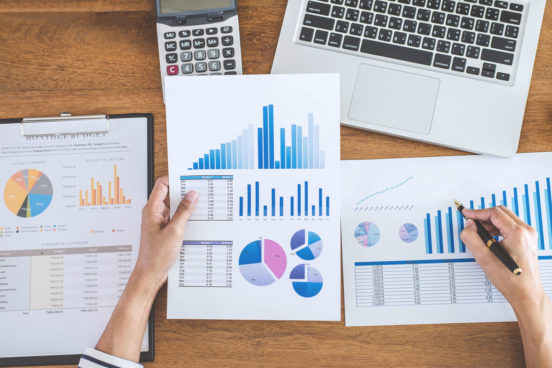Not so long ago, financial markets were largely the playground of big banks, hedge funds, and professional traders. They had the tools, the data, and the technology that seemed entirely out of reach for ordinary investors. But times have changed. Thanks to rapid advances in artificial intelligence (AI), even retail investors can now tap into powerful trading strategies that were once the preserve of institutions.
Welcome to the world of AI trading strategies — where everyday investors can harness the power of algorithms, machine learning, and real-time data to make smarter, faster, and more profitable trading decisions. Let’s explore how this revolution is unfolding, and how you can become part of it.
From Algorithms to AI: A New Era of Trading
Algorithmic trading isn’t exactly new. Traders have long used computer programmes to execute trades based on pre-set rules — buying when prices hit certain levels, selling when indicators suggest a downturn. This method allows for rapid execution, eliminating much of the human error and emotion that often clouds judgment.
But AI takes things much further.
Rather than relying solely on pre-programmed rules, AI trading strategies use machine learning and advanced data analytics to learn from the market itself. They can spot patterns that humans might miss, adapt to changing conditions, and make predictive decisions based on vast amounts of information — often in real-time.
For retail investors, this means the chance to level the playing field.
How AI Trading Strategies Work Behind the Scenes
To really appreciate the potential of AI in trading, it’s helpful to understand the key elements that power these systems:
Data Collection and Analysis
Every AI system begins with data. Lots of it. From historical price movements and trading volumes to economic reports, news articles, and even social media chatter — AI systems gather enormous datasets. This raw information is then cleaned and analysed using sophisticated statistical and machine learning techniques.
For example, natural language processing (NLP) tools can sift through thousands of news headlines and social media posts to gauge market sentiment — giving traders a feel for the mood of the market that goes far beyond traditional indicators.
Strategy Development
Once the AI has identified patterns in the data, it helps create a trading strategy built on these insights. The algorithms define specific rules: when to buy, when to sell, how much to invest, and at what risk level.
This stage is part science, part art — combining financial knowledge with AI’s predictive power to create strategies that can respond to market movements before they fully unfold.
Backtesting and Refinement
Before any strategy goes live, it needs to be tested rigorously. Backtesting allows you to see how your AI trading strategy would have performed in past market conditions.
With AI, backtesting isn’t just about historical performance — you can also simulate extreme market scenarios, test across multiple asset classes, and fine-tune your algorithms for greater accuracy.
Execution and Ongoing Monitoring
Once live, the AI trading system monitors markets 24/7, automatically executing trades when certain conditions are met. Crucially, the system also keeps learning, adapting to new data, and alerting you to shifts in market dynamics — ensuring that your strategy remains as effective tomorrow as it is today.

How to Build Your Own High-Performing AI Trading Strategy
Building a successful AI trading strategy may sound daunting, but it’s entirely achievable — even for individual investors. Here’s a simple step-by-step guide to get you started:
Step 1: Set Clear Objectives
Start by deciding what you want to achieve. Are you looking for steady, long-term growth or more aggressive short-term gains? How much risk are you comfortable taking? Your goals will shape the strategy you develop.
Step 2: Choose Your AI Tools
There’s no shortage of powerful tools available today. Popular options include Python libraries like TensorFlow and PyTorch, which allow you to build and train your own machine learning models. Many platforms also offer user-friendly interfaces specifically designed for retail investors.
Choose tools that match your technical skills, budget, and trading ambitions.
Step 3: Gather the Right Data
Quality data is everything. Your AI model will only be as good as the data it learns from. This means gathering clean, accurate information — including price history, volume data, economic indicators, and sentiment data from news and social media.
Spend time ensuring your data is properly structured and free from errors, as even small mistakes can skew your model’s predictions.
Step 4: Develop and Train Your Models
Now it’s time to put your data to work. Use machine learning techniques to train your models on historical trends. This may involve supervised learning models that predict price movements or unsupervised learning models that discover hidden market patterns.
Many traders are also exploring reinforcement learning, where the model learns through trial and error — refining its decisions over time based on outcomes.
Step 5: Backtest Thoroughly
Run your model against historical data to evaluate its performance. Look at metrics like return on investment, drawdowns, win/loss ratios, and risk-adjusted returns.
Expect to go through several rounds of tweaking and optimisation to ensure your model isn’t overfitted to past data but is robust enough to handle real-world conditions.
Step 6: Deploy Carefully and Monitor Constantly
Start small when deploying your AI trading strategy in live markets. Closely monitor performance and be prepared to make adjustments as needed.
Even the best AI models need occasional fine-tuning, especially when markets behave unpredictably. Use AI-powered monitoring tools to stay ahead of any issues and maintain your strategy’s edge.
The Challenges: What to Watch Out For
Of course, AI trading isn’t a magic wand. There are important risks and considerations:
Data Quality
Poor data leads to poor predictions. Always validate your data sources and clean your datasets thoroughly before feeding them into your models.
Overfitting
A common trap is building models that perform brilliantly on historical data but fail in live markets. Always test your models on out-of-sample data and avoid overly complex models that are too narrowly tuned.
Market Volatility
Sudden market shifts — like geopolitical events or flash crashes — can disrupt even the best AI models. Constant monitoring and flexible risk management are essential.
In Conclusion: AI Trading Strategies Put Power in Your Hands
The world of AI trading strategies is opening doors that were once firmly closed to retail investors. With the right approach, the right tools, and a healthy respect for both the opportunities and risks involved, you can build powerful trading systems that help you navigate today’s complex financial markets with confidence.
AI isn’t about replacing human traders — it’s about enhancing your decision-making with smarter, faster, and more consistent tools. As the technology continues to advance, retail investors who embrace these innovations will find themselves better equipped to succeed in a world where data-driven trading increasingly rules the markets.


